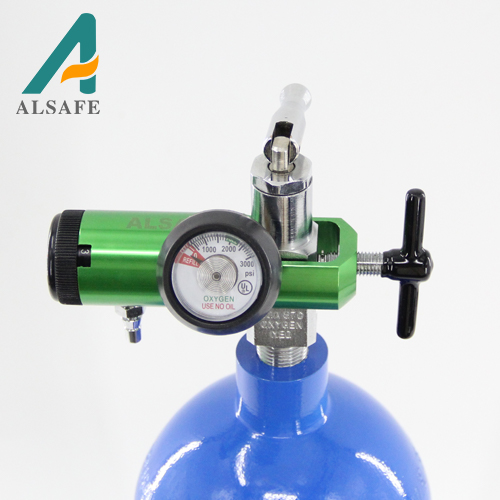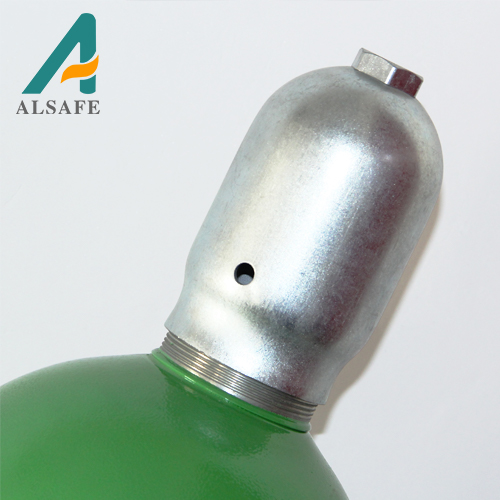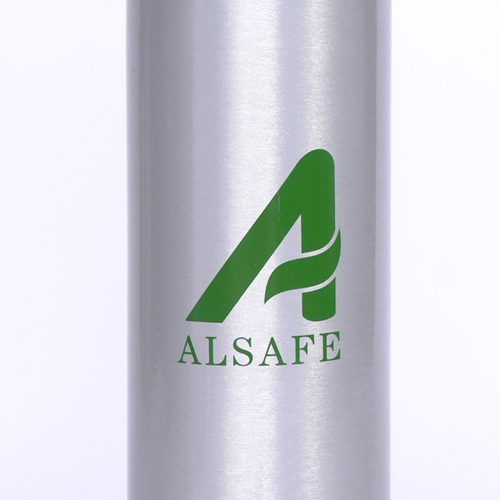Medical & Healthcare
Alsafe Cylinders for the storage of medical gas.
Alsafe Aluminum Cylinders for
Medical Gas
- DESCRIPTION
- TECHNICAL SPECIFICATIONS
- ACCESSORIES
- FAQ
Made from high-strength aluminum alloy, Alsafe Aluminum cylinders have the advantage of being lightweight, making them more convenient to transport and handle. The durable aluminum material we use can safely withstand accidental bumps and impacts. This is especially important when storing noxious or combustible gases.
An Alsafe Aluminum cylinder is an ideal choice for medical gas storage in various healthcare and life support scenarios, including emergency medical services, pre-hospital care, hospitals, and other medical institutions.
FEATURES
- Manufactured to GB/EN-ISO/DOT standard
- Portable and Easy to Handle
- High Strength-to-Weight Ratio
- About 1/3 Lighter Than Steel Cylinders
- Seamless and Corrosion Resistance
- Non-Magnetic
| Model | Outside Diameter (mm) | Water Capacity (l) | Cylinder Length (mm) | Cylinder Weight (kg) | Service Pressure (bar) / (psi) |
|---|---|---|---|---|---|
| ML6 | 111 | 1.2 | 200 | 1.3 | 139 / 2015 |
| M7 | 111 | 1.4 | 231 | 1.5 | 139 / 2015 |
| M9 | 111 | 1.7 | 285 | 1.9 | 139 / 2015 |
| MD | 111 | 2.9 | 427 | 2.9 | 139 / 2015 |
| ME | 111 | 4.6 | 660 | 4.0 | 139 / 2015 |
| M150 | 203 | 28.9 | 1212 | 23.0 | 139 / 2015 |
| Model | Outside Diameter (mm) | Water Capacity (l) | Cylinder Length (mm) | Cylinder Weight (kg) | Service Pressure (bar) / (psi) |
|---|---|---|---|---|---|
| M6 | 81 | 1.0 | 309 | 1.16 | 153 / 2216 |
| M22 | 133 | 4.0 | 445 | 4.5 | 153 / 2216 |
| M60 | 184 | 10.5 | 620 | 11.0 | 153 / 2216 |
| M90 | 184 | 15.7 | 828 | 13.7 | 153 / 2216 |
| M122 | 203 | 21.4 | 920 | 18.6 | 153 / 2216 |
| M265 | 250 | 46.4 | 1305 | 38.7 | 153 / 2216 |
Alsafe’s aluminum cylinders are constructed with aluminium alloy 6061 T-6.
When filling and refilling Alsafe cylinders, the pressure should not exceed the nominal working pressure and should be done at a temperature between -40℃ to 60℃. The threads and interior of the cylinder should be kept dry and free from any contamination.
Alsafe gas cylinders are designed and constructed in accordance with International and China domestic Standards as applicable. These Standards define the cylinders’ material, method of manufacture, test pressure, maximum permissible filled pressure, and method of periodic inspection.
Cylinders should be handled carefully to avoid impact damage. They should not be dropped or have heavy objects fall on them. Impact damage can potentially reduce the cylinder wall thickness, leading to premature cylinder rupture.
For seamless cylinders, permanent identification markings are usually found on the shoulder of the cylinders.
The stamp markings generally include the following information: Cylinder Serial Number, Manufacturer’s Identification, Hydraulic Test Pressure (in bar), Working Pressure (in bar), Empty Cylinder Weight (in kg), Actual Water Capacity (in L), Design Wall Thickness (in mm), Year and Month of Manufacture, and the Manufacturing Standard.
After each use, wash the cylinder and its accessories in freshwater and dry them, especially after use in seawater. If seawater accidentally contacts the cylinder interior, rinse it with clean freshwater immediately for 2-3 times, then blow dry the interior with clean, dry air.
For frequently used scuba cylinders, remove all components, clean and dry thoroughly at least once a month. It is recommended to remove the cylinder valve and inspect the cylinder at least every 3 months. If the cylinder shows signs of damage or corrosion, it should not be used.












